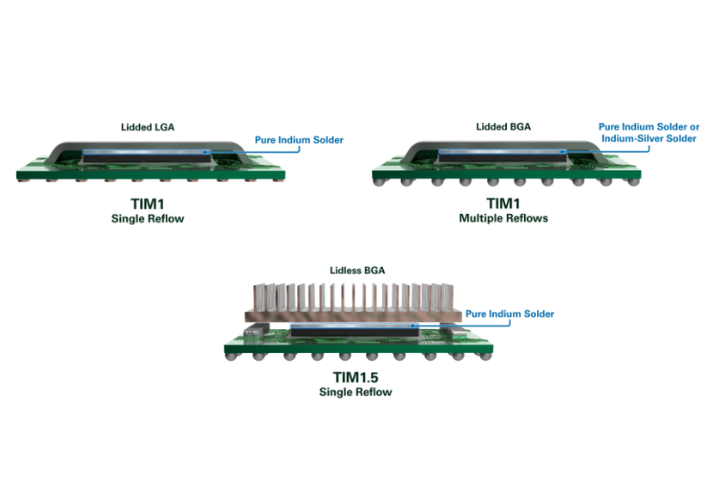The ball-attach process is admittedly not as exciting as others, such as flip-chip assembly and 2.5D and 3D packaging. Previously, I would read in the news about advancements in packaging that are coming about, and the exciting innovations that are occurring at that level, and I’d think to myself, “well, ball-attach seems so dull compared to this.”
While the ball-attach process can mistakenly be considered trivial, the soldering steps that go into this technique are indeed complex, and there are many variables which can affect the final ball-attached package. Luckily, if any readers encounter these common ball-attach assembly problems, Indium Corporation has the products to meet those challenges.
Quickly summarizing the standard ball-attach process, there are usually two steps: a prefluxing step and the actual BGA assembly step. The prefluxing step is needed because the reflow process for package assembly on top of the substrate, such as that for flip-chip packages, causes poor solderability on the pads on the bottom of the substrate. In other words, reflowing a flip-chip package at 240°C, then washing the residue off at 95°C, then drying the package at 130°C, then applying the molding compound at 130°Ccan change the solderability of the bottom BGA pads. This can be frustrating because those pads haven’t even been used yet! Thus, a prefluxing step is needed to protect the integrity of the bottom BGA pads.
So, what are the common defects that can occur from this? The main result of poor solderability on a joint is poor joint shear strength, which could result in potential joint failure. This is especially noticeable with pad metallizations which are hard to solder to, such as Copper OSP. Poor solderability can also lead to a solder joint simply not forming, leading to non-wet open defects and ultimately causing electrical opens.
Another common failure that results from the prefluxing steps is substrate warpage. Substrates which are used for semiconductor assembly are commonly quite thin and prone to warpage during heating. One warped component in a cell phone or vehicle sensor can cause lasting effects, so defects should be addressedin the prefluxing steps.
So, what does all this mean? While the ball-attach process is complex and has the potential to encounter many defects, Indium Corporation has solutions to solve these problems! Particularly noteworthy is our newest ball-attach flux, WS-823, a proven, one-step ball grid array ball-attach flux designed to eliminate the costly and warpage-inducing prefluxing step. WS-823 is a halogen-free, water-wash flux designed for a single-step ball-attach process that eliminates the prefluxing step in order to create reliable ball-to-pad joints. So, the common problems caused by prefluxing a substrate are not reduced, but altogether eliminated with this flux!
To learn more about Indium Corporation's BGA ball-attach fluxes, visit our website using this link.



